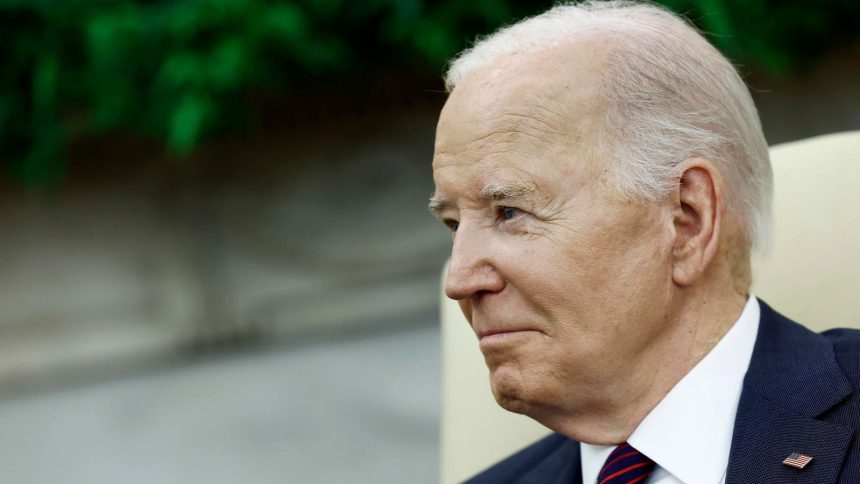The Education Department announced that President Joe Biden has canceled another $300 million in debt through a student loan forgiveness program that has hit record approval rates.
The details released by the department last week were part of a broader wave of loan forgiveness approved by the Biden administration under a number of separate programs, and comes as officials are moving forward with yet another mass debt cancellation program that they hope will survive judicial scrutiny.
“Today we are helping 277,000 borrowers who have been making payments on their student loans for at least a decade,” said Under Secretary of Education James Kvaal in a statement on Friday, referring to this wider batch of student loan forgiveness approvals. “They have paid what they can afford, and they have earned loan forgiveness for the balance of their loan.”
Here are the details.
Student Loan Forgiveness Through PSLF Reaches Record Highs
The $300 million in student loan forgiveness was approved under the Public Service Loan Forgiveness program. PSLF can wipe out federal student debt for borrowers who devote their careers to public service work, which includes employment for certain nonprofit and government agencies. Borrowers can qualify for loan forgiveness after making 120 qualifying monthly payments, the equivalent of 10 years.
But PSLF was plagued by numerous problems since its creation in 2007, resulting in borrower confusion and low approval rates. The Biden administration implemented several initiatives — some temporary, some more lasting — to improve access to the program and make it easier for borrowers to receive PSLF credit. These changes include:
- The Limited PSLF Waiver, a temporary program that ended in 2022 and relaxed key requirements of PSLF to account for past loan servicing and administrative problems.
- The IDR Account Adjustment, another temporary initiative that is ongoing and extends several of the features of the Limited PSLF Waiver.
- Regulatory reforms that relax some of the strict rules defining qualifying payments and qualifying employment, including a new “buyback” option that serves as a safe harbor for loan periods that might not otherwise count toward forgiveness.
- A new streamlined online platform for submitting and processing PSLF employment certifications.
As a result of these changes, the PSLF program has experienced remarkable changes. When Biden first took office, the program had a one percent approval rate, and only a few thousand borrowers had received student loan forgiveness.
“The Administration has now approved $62.8 billion in forgiveness for almost 876,000 borrowers through PSLF” since 2021, according to Education Department data released last Friday.
Additional Student Loan Forgiveness Approved Under Other Programs
The PSLF approvals announced last week were part of a larger batch of student loan forgiveness announced by the Biden administration under other programs.
The Education Department approved at least $3 billion in forgiveness through a feature of the new SAVE plan that can accelerate debt relief. SAVE — a new income-driven repayment plan unveiled by the Biden administration last fall — can shorten borrowers’ IDR forgiveness timelines from 20 or 25 years to as little as 10 years if they took out small amounts of loans. More than 200,000 borrowers got their student debt cancelled under this provision this month.
The department approved another 65,700 borrowers for debt relief under the IDR Account Adjustment. This temporary initiative relaxes the rules pertaining to 20 or 25-year student loan forgiveness under income-driven repayment plans, and allows many past periods of repayment, deferment, and forbearance to potentially count. These periods can also count toward PSLF, as well, if borrowers were working in qualifying public service employment at the time. The IDR Account Adjustment is set to wind down this summer, and certain borrowers may need to take action before the end of April in order to qualify.
New Biden Student Loan Forgiveness Plan Could Arrive Soon
Last Friday’s announcement of the latest wave of student loan forgiveness followed another blockbuster announcement earlier that week that President Biden would soon be unveiling a new mass debt cancellation plan.
The new loan forgiveness program is designed as a replacement for Biden’s first mass debt relief plan that the Supreme Court rejected last year. The latest effort will target relief to five groups of borrowers, including those facing hardship. The program must go through several additional administrative steps before it is officially launched, but borrowers could start applying as soon as this fall — provided it doesn’t get struck down in court, which could very well happen.
Read the full article here
















